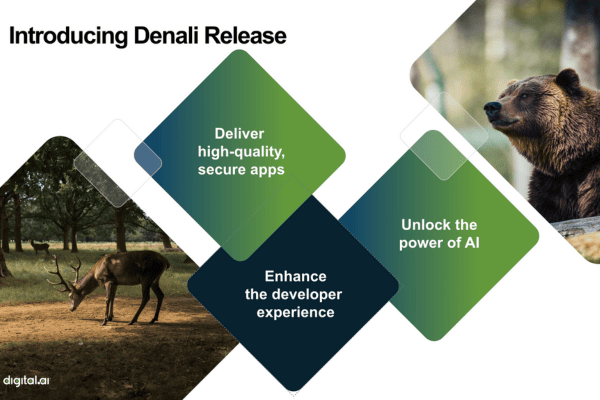Are you ready to scale your enterprise?
Explore
What's New In The World of Digital.ai
How DevOps and AI Together Maximize Software Delivery Efficiency
Explore the transformative power of AI and ML in DevOps. Predict delays, avoid software change failure, and leverage solution patterns for a more efficient SDLC.
Key Findings from the Accelerate State of DevOps Report 2023
Unlock insights from the 2023 Accelerate State of DevOps Report and start enhancing software delivery, operations, and team well-being for sustained success.
Denali Release
Explore the Denali Release: Digital.ai’s Latest AI-Powered DevSecOps Platform! Dive deep into new features, AI integrations, and secure application delivery at scale.



